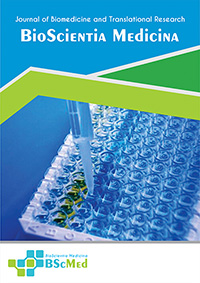Main Article Content
Abstract
Background: Lacrimal gland tumors are a rare and heterogeneous group of neoplasms, representing a significant diagnostic and therapeutic challenge. Regional data, particularly from Southeast Asia, is sparse. This study aims to define the clinicopathological spectrum, radiological features, and management strategies for lacrimal gland tumors at a major tertiary referral center in Indonesia.
Methods: A retrospective, cross-sectional analysis was conducted on all patients with histopathologically confirmed lacrimal gland tumors treated between January 2019 and June 2024. Data extracted from medical records included demographics, detailed clinical presentations (visual acuity, proptosis, pain scores), radiological findings from computed tomography (CT) and magnetic resonance imaging (MRI), definitive histopathological diagnoses with immunohistochemical profiles, and treatment modalities with short-term outcomes. Descriptive statistics and comparative analyses were performed.
Results: A total of 35 patients (19 male, 16 female; mean age 48.2 ± 16.5 years) were included. Non-epithelial lesions (88.6%) were more common than epithelial tumors (11.4%). The most prevalent diagnosis was idiopathic orbital inflammation (IOI) (n=12, 34.3%), followed by lymphoproliferative disorders (n=11, 31.4%). Adenoid cystic carcinoma (ACC) was the most frequent malignant epithelial tumor (n=3, 8.6%). Superior eyelid edema was the hallmark of non-epithelial lesions (83.9%), whereas proptosis (mean 6.2mm) and severe pain (mean VAS 7.3/10) were characteristic of ACC. Radiological findings were highly correlative, with IOI showing diffuse gland enhancement and ACC demonstrating bone erosion and perineural invasion. Management was tailored to histology, with corticosteroids for IOI, radiotherapy for lymphomas, and radical surgery for ACC.
Conclusion: In this Indonesian cohort, lacrimal gland tumors are predominantly non-epithelial, with inflammatory and lymphoproliferative conditions being most common. A high index of suspicion for malignancy, particularly ACC, is warranted in patients presenting with pain and proptosis. Integrating clinical, radiological, and pathological data is paramount for accurate diagnosis and effective management.
Keywords
Article Details
As our aim is to disseminate original research article, hence the publishing right is a necessary one. The publishing right is needed in order to reach the agreement between the author and publisher. As the journal is fully open access, the authors will sign an exclusive license agreement.
The authors have the right to:
- Share their article in the same ways permitted to third parties under the relevant user license.
- Retain copyright, patent, trademark and other intellectual property rights including research data.
- Proper attribution and credit for the published work.
For the open access article, the publisher is granted to the following right.
- The non-exclusive right to publish the article and grant right to others.
- For the published article, the publisher applied for the Creative Commons Attribution-NonCommercial-ShareAlike 4.0 International License.





